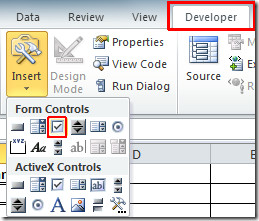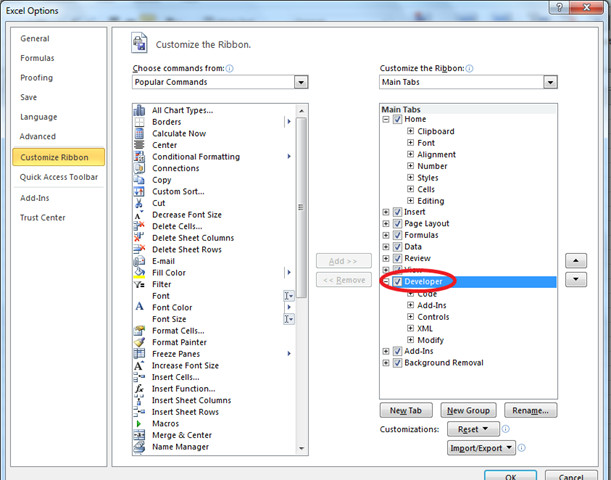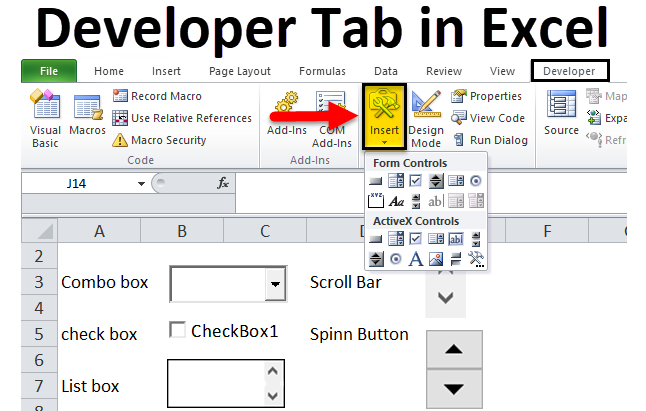

Change from “ThisWorkbook” to “ActiveWorkbook” if needed. You should check carefully that “ThisWorkbook” refers to the Add-in Workbook, not the ActiveWorkbook. Create Excel Add-inĪssume that you have already created several Sub Procedure in the Module of a Workbook. In the following demonstration, I will use a real example where I create several Macro for users to validate data, such as data formatting and conflicting values.

In order to facilitate users to locate and run the Macro, I highly recommend to add the Macro in Ribbon.
#ADD DEVELOPER TAB IN EXCEL 2010 INSTALL#
If not, create an Add-in.Īfter creating an Excel Add-in, send the Add-in to users, then install the add-in. To summarize, if your Macro is only for use in particular Workbook, you don’t have to use Add-in. If you have used Functions from Analysis ToolPak before, you realize that if you send the Workbook that used the Function (such as MRound, Networkdays) to others who do not have the Add-in, the formula will fail once refreshed. The Add-in itself is stored in the local drive of the receiver, it is not stored in a Workbook. xlam (for Excel 2007 and newer version) where users can use the Macro in any Workbook in his workstation. xla (for Excel 2003 and older version) and. You can simply add the VBA code in the Module of a Workbook and then distribute the Workbook, but the problem is that the Macro cannot be used in other Workbook.ĭepending on the situation, you may want to distribute a Macro is through Add-in.

Writing your first Excel Macro by recording Macro Why use Excel Add-inĪfter you have created a Macro (Sub Procedure), you may want to distribute it for users to use.
#ADD DEVELOPER TAB IN EXCEL 2010 HOW TO#
This Excel tutorial explains how to add Excel Add-in in Ribbon.


 0 kommentar(er)
0 kommentar(er)
